Our extra-large special edition is here. Subscribe today and receive the 25% longer issue at no extra cost!
Eight Takeaways From Our Hands-On With Labo
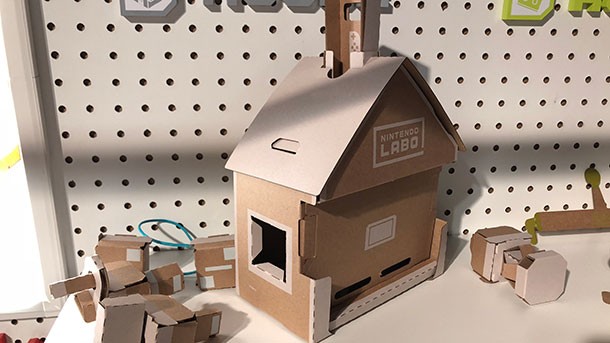
We recently got to go hands-on with Labo, spending time popping its cardboard pieces out of templates, folding them together, playing with the compatible games, and looking at the surprisingly versatile Toy-Con garage.
Since its debut, Nintendo has made it clear Labo is meant for the younger Switch player. In order to look at the product from a younger point of view, I brought my kindergartner to Nintendo’s event to help me test out the strange craft/video game hybrid. Here are some of my takeaways from spending time with it myself, and watching a child spend time with it.
It’s More Toy Than Video Game
This is not a bad thing, nor is it meant to start a debate about what defines a video game, it’s just something I was struck with after playing with Labo. Putting together the Labo creations is fun and even playing with the pieces, like the fishing rod, separate from the game is neat, but it's unclear how much depth the accompanying games will have.
The fishing game works well and is very responsive, but our demo didn’t imply you would be getting better in-game gear or different hooks. You catch your fish (using some of the best motion-controls I’ve ever used), and then you can look at your stats and your fish in an aquarium. The other applications were similar. The racing game felt good and seemed like it had the most to offer. You can make your own tracks, race A.I., and play a mode where you collect targets, but it didn’t seem like you would be chasing unlocks. The house and piano both responded differently depending on what kind of plugs are placed on the sides. It’s more about seeing what will happen, being creative, and hearing what kind of sounds you can make than chasing a goal.
It’s A Showcase For What The Switch’s Joy-Cons Can Do
We’ve always been aware of the Joy-Con’s IR camera and HD rumble capabilities, but they’ve both been underused. Labo shows what these tools are capable of doing. The main way the Joy-Cons interact with the Labo Toy-Cons is by using the IR camera to watch for the movement of special reflective IR sensors on the insides of the creations, and it was all very responsive and worked well.
The RC car Toy-Con even has a night vision mode that sends a video feed of what the IR camera is seeing to the Switch's screen, so you could conceivably use it as a toy spy camera. You can even place little IR markers down for the RC car to chase.
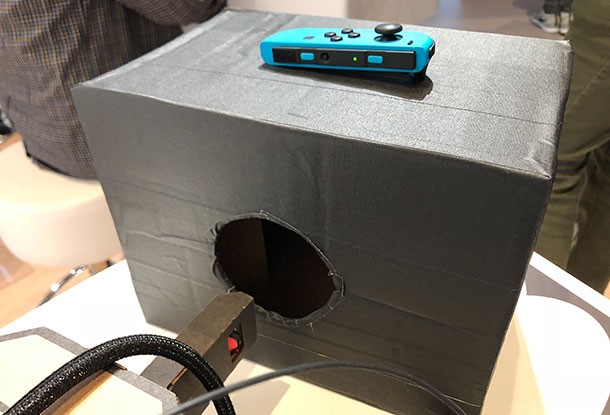
The piano has an acoustic mode that makes the left Joy-Con vibrate at different pitches. Nintendo showed this off by cutting a hole in a large cardboard box (the regular kind, not the Labo kind), placing the left Joy-Con on top of it, and then letting us play different notes. The hole amplified the vibration, and you could hear the different pitches the controller could make just by vibrating. It was impressive.
It’s Durable, But Not Indestructible
The Labo pieces are thinner than I thought they would be, but they were also more durable than expected. Though I didn’t actively test it, it’s safe to assume these pieces will collapse under the pressure of an adult foot, but it didn’t tear easily. Likely against Nintendo’s wishes, I tasked my daughter with trying to tear the cardboard, and though she did pull it off eventually, it wasn’t without decent effort. I also asked her to play the piano with her face, and it survived unscathed.
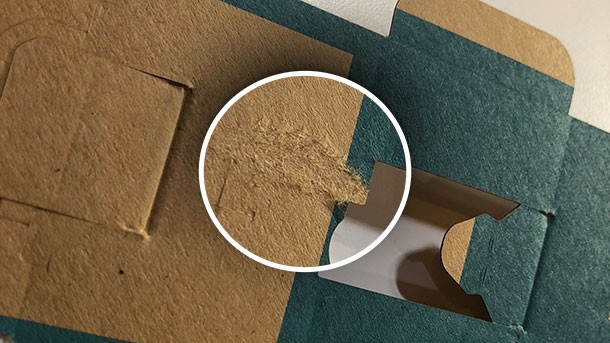
The pieces also popped out of the template easily without fear of tearing. I did encounter one minor rip that removed a small, paper-thin layer from the top, but as long as you’re reasonably methodical, it doesn’t seem like you will accidentally mess up your Toy-Con before completing the first step.
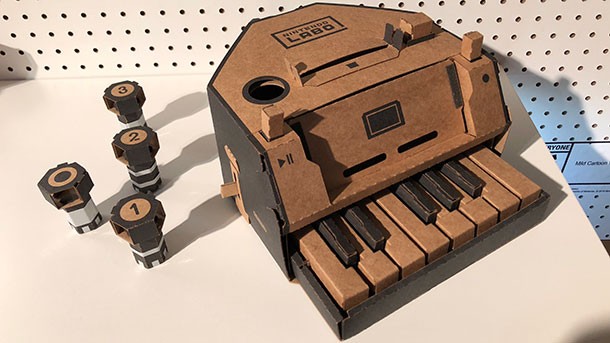
The Piano Is More Than A Piano
The piano is arguably the most impressive Toy-Con, having the most pieces (and it functions as a damn piano), but it does more than just make music. It acts as a tripod of sorts for the IR camera, and one application of this is the ability to insert a piece of paper into a slot in the top that it will scan for shapes.
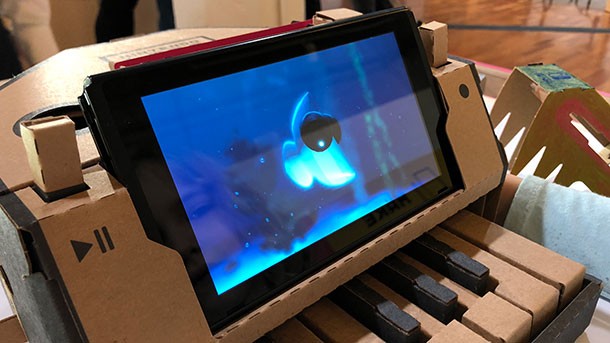
For example, if you cut a zigzagging series of spikes into the paper that you insert into the slot, the IR camera will scan that shape and use it. We took advantage of this to design fish that could be placed into the fishing game. After it scanned the shape it created a fish of that shape and then you could press the keyboard keys to select the colors for your fish.
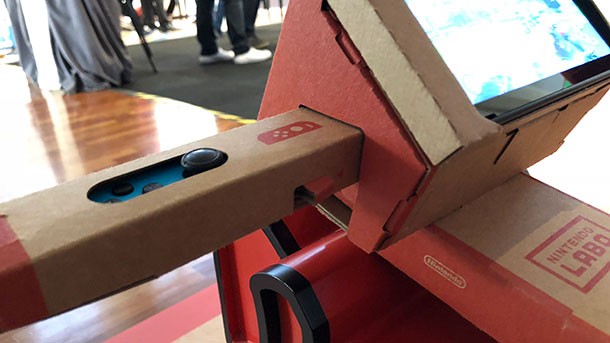
It Made Me Think Of VR
The racing game reminded me a lot of the experience of using virtual reality. The Switch’s screen is not attached to your face, but the way you move the whole device, holding the cardboard handlebars and leaning your body to make harder turns, gave me a better sense of immersion over the race. This isn’t new technology – the Wii U and 3DS have done things like this – but something about holding the device and focusing on the screen which responded well to my movements just reminded me of strapping on a VR headset.
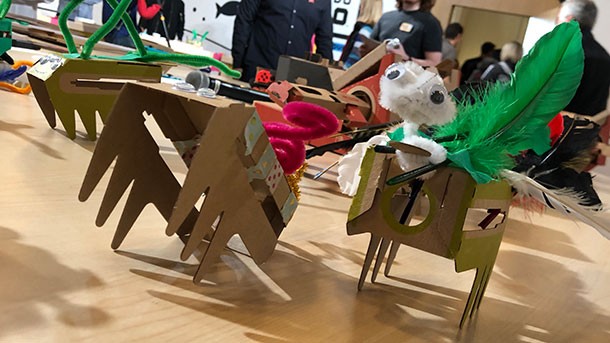
All My Kid Wanted To Do Was Color It
Much like Legos, I enjoyed the building part of the Labo process the most. The games served as neat applications of the creations, but the act of following the directions, folding the cardboard, locking in tabs, and ending up with something I could hold in my hand was satisfying. All my daughter wanted to do, however, was color and decorate the creations, to the point that she would steal the components away from me as I built them, color them, and return them to me. Coloring is a staple in our household, but I think it was the prospect of coloring a 3D object that made it more exciting.
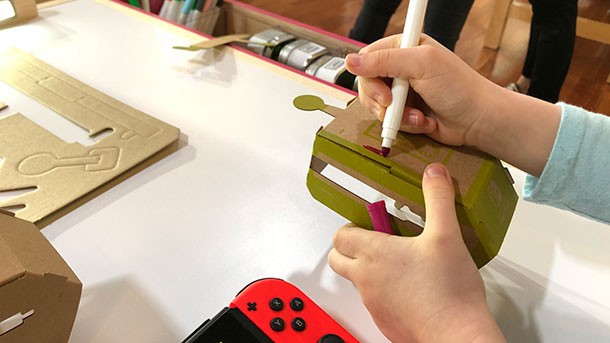
Nintendo is clearly counting on kids like my own to run wild with customization because a big part of its showcase was bringing out creations it had put together with markers, feather, stickers, tape, googly eyes, and other junk drawer mainstays.
Toy-Con Garage Teaches Children Programming
Toy-Con Garage is a separate mode in the Labo software that lets players tweak and create new functions from scratch for the Switch and the Joy-Cons. It’s versatile to the point that it has its own simplified visual programming language. You have an input square that you can customize (press the A button on the right Joy-Con, for example) and an output square (make the left Joy-Con vibrate) that you can connect with a line to make things happen. Some simple examples Nintendo showed off were entirely customized instruments that used the Switch’s touchscreen and using the fishing rod or piano to control the RC car.
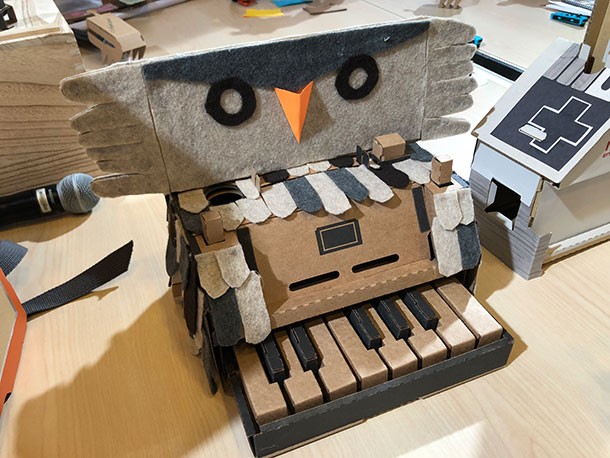
Creative Kids (And Adults) Are Going To Make Amazing Things With Labo
It’s difficult to tell how deep the Toy-Con Garage can go with its programming language, but people have done amazing things with similarly simple programming options in games like Minecraft and LittleBigPlanet. To take some of those programming options and have them work with a touchscreen and two controllers, one of which has a camera, and then to apply that software to physical cardboard really has the potential to lead to some amazing creations.
For more on Labo, check out our discussion about Labo on a recent episode of the Game Informer Show.

Get the Game Informer Print Edition!
Explore your favorite games in premium print format, delivered to your door.
- 10 issues per year
- Only $4.80 per issue
- Full digital magazine archive access
- Since 1991









